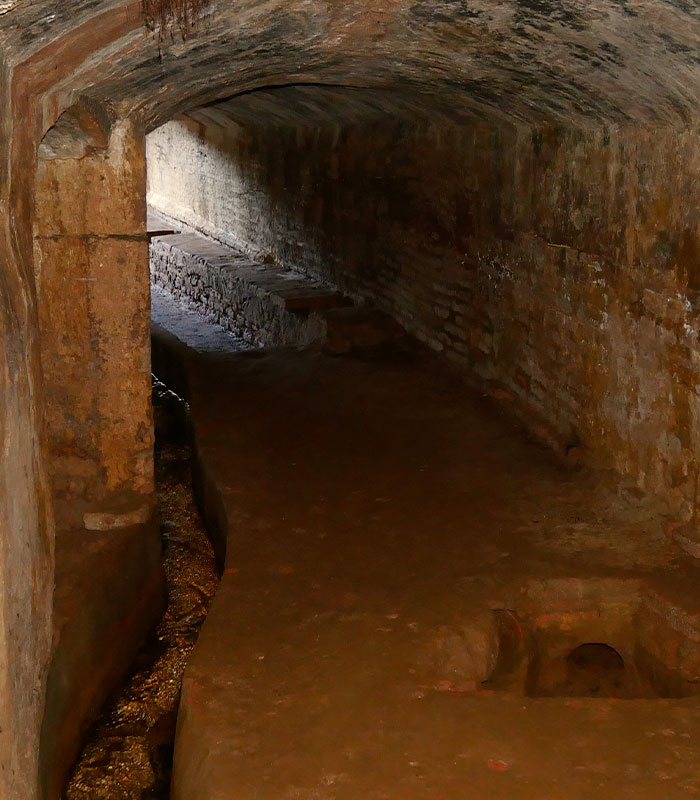The Arca del Agua is one of the most valuable engineering legacies of all the works of the Hieronymites scattered over the Villuercas-Ibores-Jara Global Geopark of the UNESCO. With the aim of exploiting and distributing the water of springs, in the 14th century a true work of art of medieval hydraulic engineering was constructed that still works perfectly. For many centuries this work, which penetrates the depths of the sierra, has allowed both the Real Monasterio de Guadalupe and nearby kitchen gardens, palaces, houses, and hospitals to enjoy cool drinking water from the springs of the sierra all year round. There is no doubt that it was one of the mainstays of the prosperity of the site. It is considered to be the oldest hydraulic system still in use in Spain.
Some six kilometres from Guadalupe on the road to Navalmoral de la Mata and then on a track leading west from the Chapel of the Humilladero lies the Arca del Agua, an exceptional piece of engineering with seven centuries of history. It is one of the geosites of the Villuercas- Ibores-Jara Global Geopark of the UNESCO and despite its interest and importance may pass unnoticed as most of its structures are underground. The construction of the Arca del Agua was completed in 1350. Broadly speaking it consists of a complex system for capturing underground water in order to channel it to the Real Monasterio and the town of Guadalupe.
The main capture consists of a series of underground galleries dug out of the rock covered with slate or vaulted with brick, called water mines, which drain the water from various springs mainly located on the south and east hillsides of the crag of La Villuerca. On these slopes the contact between the quartzite rocks and those with a slate component give rise to fissures through which the underground water spurts as springs, ‘veneros’ or ‘manaeros’.

